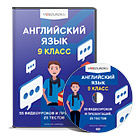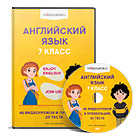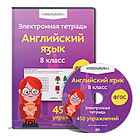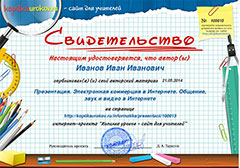Методическая разработка внеаудиторного занятия
по теме “Automobile. Professional terms”
2
Тема: Automobile. Professional terms
Преподаватель: Болдырева Ю.С.
Учебная дисциплина /Профессиональный модуль: Английский язык
Группа: РАТ-76, РАТ-75
Цели:
Воспитательные: воспитывать уважительное отношение к иноязычной
культуре, толерантное отношение студентов друг к другу; внимательность,
ответственность, способность к сотрудничеству, интерес к дисциплине, к
будущей профессии.
Образовательные : закрепить специальную лексику по теме «Automobile.
Professional terms»; совершенствовать умения и навыки практического
владения английским языком по данной теме.
Развивающие: способствовать развитию воображения, логического и
творческого мышления; развивать познавательный интерес,
коммуникативные компетенции; умение понимать поставленную проблему с
опорой на имеющиеся знания; память и быстроту реакции.
Методы:
- словесные
- наглядные
- репродуктивные
- частично-поисковые
Элементы педагогических технологий:
- личностно-ориентированный подход
- игровая технология
- информационно-коммуникационная технология
- технология достижения успеха
Оборудование :
- мультимедийный проектор;
3
- экран;
-раздаточный материал: карточки с заданиями, комплекты практических
заданий.
Список литературы:
Основные источники: Александров П.С., учебное пособие «Английский язык
для автотранспортных специальностей», 2016.
Требуемое время: 2 академических часа.
4
Пояснительная записка
Повышение эффективности обучения иностранному языку можно
осуществить через создание языкового социума. Такой вид деятельности
позволяет соединить учебно-воспитательный процесс в единое целое,
удовлетворить интеллектуальные и эмоциональные потребности учащихся.
Внеклассная работа по иностранному языку имеет также большое
общеобразовательное и развивающее значение. Она не только углубляет и
расширяет знания иностранного языка, но и способствует расширению
культурологического кругозора студентов, развитию их творческой
активности, эстетического вкуса и, как следствие, повышает мотивацию к
изучению языка и культуры другой страны. Так давайте рассмотрим
сценарий внеаудиторного занятия. Тема занятия «Automobile. Professional
terms». Тип занятия - командная игра.
5
Сценарий внеаудиторного занятия
Вступительное слово:
Good afternoon everybody! I’m glad to see you. I hope you are fine today and
ready to work hard. Let’s start our game. Just now two teams will take part in our
competition and show us how much they know about automobiles, professional
terms and in the end we’ll see the winner. So, let’s start. .
Ход игры
1) Match up the adjectives in column A with the nouns in column B to
form a phrase.
A B
forward system
reverse clutch
ordinary gearbox
characteristic acceleration
fixed brakes
dependable speed
rapid drive
silent gearing
smooth-acting feature
steering axes
2) Translate the Dialogue into Russian.
Dialogue
A: Do you know what parts the automobile is made up of?
B: Certainly. It is made up of the engine, the chassis and the body.
A: What is the source of power?
B: The source of power is the engine. It includes fuel, cooling, lubricating and
electric systems.
6
A: And what does the chassis consist of?
B: It consists of a power transmission, running gear, steering and braking systems.
By the way, the power transmission, in turn, comprises the clutch, gearbox,
propeller shaft, final drive, differential, rear axle and axle shafts.
A: And what has the body?
B: The body has a hood, fenders and accessories, such as: the heater, stereo tape
recorder, windshield wipers, conditioner and so on.
A: Thank you very much for your information.
3) Translate the sentences into English.
1. Автомобиль состоит из трёх основных частей: двигателя, шасси и
кузова.
2. Двигатель – это источник энергии.
3. Двигатель включает в себя топливную, охлаждающую, смазывающую
и электрическую системы.
4. Шасси включает в себя силовую передачу, ходовую часть, рулевую и
тормозную системы.
5. Кузов включает в себя капот, крылья и вспомогательные аксессуары.
4) Find appropriate Russian equivalents.
Source of power колодки тормоза
Speed источник энергии
Springs стеклоочистители
Tachometer скорость
Wheel рессоры
Windshield wipers колесо
Brake shoes тахометр
Axle shafts силовая передача (трансмиссия)
Body топливо
7
Conditioner полуоси
Flywheel кузов
Frame маховик
Fuel кондиционер
Power train рама
5) Fill in the gaps, using the words given below.
1. Brakes are used to slow or stop the _________ where it is necessary.
2. It is one of the most important mechanisms of the car as upon its proper
performance the _________ of the passengers depends.
3. Brakes are controlled by the __________.
4. The air brake uses compressed _________ to apply the braking force to the
brake shoes.
5. Most braking systems in use today are __________.
air, brake pedal, safety, car, hydraulic
6) Translate these terms.
Acceleration
Accident
Antifreeze
Armature
Auto service
Automatic
Auto-wash
Brake system
Engine
Final drive
Propeller shaft
8
Construction
7) Read the text, answer the following questions.
Manual and Automatic Transmissions.
The transmission is a mechanism that changes speed and power ratios between the
engine and driving wheels.
The conventional transmission provides for three or four forward speeds and one
reverse speed. It consists of two shafts, each with gears of varying diameters.
When a pair of gears permits the driven shaft to turn more rapidly than the driving
shaft, the transmission is said to have overdrive. Overdrive is designed to increase
the speed of a car.
The torque-converter type of transmission provides an unlimited number of gear
ratios with no shifting of gears. The turbine is connected to drive shaft and causes
it to rotate.
Both Hydra-Matic and torque-converter systems are controlled by a selector level
on the steering column, which provides for reverse and sometimes for emergency-
low gears.
1) What is transmission?
2) What does it consist of?
3) What is overdrive designed to?
8) Put the sentences in the right order.
Finding a fault in a car
a) It is easy to repair these faults.
b) If your car doesn’t start in the morning, you should check three things first:
the battery, the fuel level and the spark plugs.
c) If this doesn’t work, you should replace it.
d) If the battery is flat, you should recharge it.
e) If the spark plugs are dirty, clean them, and if the gap in a spark plug is too
narrow or too wide, adjust it to the correct width.
9) Find one false statement.
9
1) Petrol engines are usually lighter and smaller than diesel engines.
2) Diesel engines use less fuel and last longer than petrol engines.
3) Diesel engines are also safer than petrol engines, because they are less danger of
fire.
4) There are two main types of petrol engine – 4-stroke and 2-stroke.
5) All cars and larger motor-cycles use 2-stroke engines.
10) Read the dialogue without mistakes in pronunciation.
At the Repairing Shop
Client: Good afternoon! Can you help me? There is something wrong with the
engine.
Master: Hi! What is wrong with it?
Client: I don’t know. It wouldn’t start. Maybe the pistons and valves are in
disorder.
Master: Let’s have a look! Well, they are quite right.
Client: And what about the crankshaft, or electric spark plugs. I know absolutely
nothing about the operating cycle of the engine.
Master: Don’t worry! We shall check up all units and how they work together.
Some time later.
Master: My God! There is no petrol in the tank. How can you drive?
Client: Really? Oh, I have forgotten to fill in the tank! I beg your pardon to trouble
you!
Master: No trouble, at all.
Подведение итогов игры, объявление победителей















